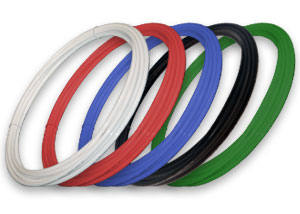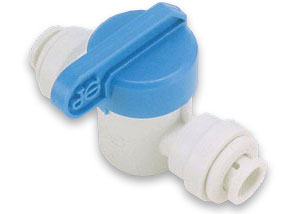What is a Boil-Water Advisory
A boil-water advisory or boil-water order is a public health advisory or directive given by government or health authorities to consumers when a community’s drinking water is, or could be, contaminated by pathogens.
Boiling water
To boil water:
- Fill a pot with water.
- Heat the water until bubbles come from the bottom of the pot to the top.
- Once the water reaches a rolling boil, let it boil for 1 minute.
- Turn off the heat source and let the water cool.
- Pour the water into a clean container with a cover for storage.
At altitudes above 2,000 metres (6,600 ft), boiling should be extended to 3 minutes, as the lower boiling point at high altitudes requires more time to kill such organisms.
Disinfecting water
If you are unable to boil your water, disinfect it instead.
If tap water is clear:
- Use unscented bleach (bleach that does not have an added scent).
- Add 1/8 teaspoon (8 drops or about 0.75 milliliters) of unscented household liquid bleach to 1 gallon
(16 cups) of water.
- Mix well and wait 30 minutes or more before drinking.
- Store disinfected water in clean container with a cover.
If tap water is cloudy:
- Filter water using clean cloth.
- Use unscented bleach (bleach that does not have an added scent).
- Add 1/4 teaspoon (16 drops or 1.5 milliliters) of unscented household liquid bleach to 1 gallon (16 cups) of water.
- Mix well and wait 30 minutes or more before drinking.
- Store disinfected water in clean container with a cover.
If you are unable to boil your water, disinfect it instead.
To sanitize containers:
- Use unscented bleach (bleach that does not have an added scent).
- Make a sanitizing solution by mixing 1 teaspoon (5 milliliters) of unscented household liquid bleach in 1 quart (32 ounces, 4 cups, or about 1 liter) of water.
- Pour this sanitizing solution into a clean storage container and shake well, making sure that the solution coats the entire inside of the container.
- Let the clean storage container sit at least 30 seconds, and then pour the solution out of the container.
- Let empty container air dry OR rinse it with clean water that has already been made safe, if available.
Never mix bleach with ammonia or other cleaners. Open windows and doors to get fresh air when you use bleach.
Water Filters
Boil tap water even if it is filtered. Most kitchen and other household water filters typically do not remove bacteria or viruses unless specifically stated.
Preparing and cooking food
- Wash all fruits and vegetables with boiled water that has cooled or bottled water.
- Bring water to a rolling boil for 1 minute before adding food to cook.
- Use boiled water when preparing drinks, such as coffee, tea, and lemonade.
- Wash food preparation surfaces with boiled water.
Feeding babies and using formula
Breastfeeding is best. Continue to breastfeed. If breastfeeding is not an option:
- Use ready-to-use baby formula, if possible.
- Prepare powdered or concentrated baby formula with bottled water. Use boiled water if you do not have bottled water. Disinfect water for baby formula if you cannot boil your water (see above for directions on how to use bleach to disinfect water).
- Wash and sterilize bottles and nipples before use.
- If you cannot sterilize bottles, try to use single-serve, ready-to-feed bottles.
Ice
- Do not use ice from ice trays, ice dispensers, or ice makers.
- Throw out all ice made with tap water.
- Make new ice with boiled or bottled water.
Bathing and showering
Be careful not to swallow any water when bathing or showering.
Use caution when bathing babies and young children. Consider giving them a sponge bath to reduce the chance of them swallowing water.
Brushing teeth
Brush teeth with boiled or bottled water. Do not use untreated tap water.
Washing dishes
Household dishwashers generally are safe to use if the water reaches a final rinse temperature of at least 150 degrees or if the dishwasher has a sanitizing cycle.
To wash dishes by hand:
- Wash and rinse the dishes as you normally would using hot water.
- In a separate basin, add 1 teaspoon of unscented household liquid bleach for each gallon of warm water.
- Soak the rinsed dishes in the water for at least one minute.
- Let the dishes air dry completely.
Laundry
It is safe to do laundry as usual.
Pets
Pets can get some of the same diseases as people. It is a good idea to give them boiled water that has been cooled.

A boil-water advisory or boil-water order is a public health advisory or directive given by government or health authorities to consumers when a community’s drinking water is, or could be, contaminated by pathogens.

Learn how to make an emergency water filter for disaster situations out of some common items.
This method does work and can keep you heathly if clean potable water or a manufactured water filter system are unobtainable.

The Hydrologic Cycle (also called the Water Cycle) is the continuous movement of water in the air, on the surface of and below the Earth.
This cycle is the exchange of energy which influences climate. When water condenses, it releases energy and warms the environment.

90% of the garbage floating in the Earth’s oceans is plastic and less than 5% of all plastic is recycled.
The patch mostly consists of pelagic plastics, formed from plastic bags, plastic water bottles, bottle caps and styrofoam.

Hydraulic fracturing (sometimes referred to as fracking or hydrofracking) is a relatively new form of natural gas extraction.
The fluids used in the fracking process flow back to the surface, often entering the water table or polluting the drilling area, and sometimes improper disposal of waste water from the wells.

Chlorine has long been recognized as an oxidative agent, meaning that it not only kills the germs in the water supply; it will damage any living tissue with which it comes in contact. And your skin, like the rest of your organs, is living tissue. But that’s not the only problem.

Since the discovery of its health benefits in the mid-1940’s, fluoride is often added to the public water supplies of industrialized countries in order to reduce the populations tooth decay, which is especially effective in low income communities, where good dental hygiene may be too costly.

Chromium-6 was found in the drinking water supply of the southern California town of Hinkley and brought to national attention by Erin Brockovich.
The EPA is reviewing effects of Chromium-6 after a recent report brought to light dangerous levels in a number of major US cities.

Giardia is a flagellated protozoan parasite that colonizes and reproduces in the small intestines of humans and other animals, which can cause giardiasis.
Symptoms of Giardiasis usually show after 3 to 4 days, and include gastrointestinal and constitutional problems.

Cryptosporidiosis is a disease caused by the parasite Cryptosporidium parvum.
Since a outbreak in 1993 in Wisconson, new attention has been focused on determining and reducing the risk for Cryptosporidiosis from community and municipal water supplies.

What is ultraviolet light? Do I need to filter the water before the UV process? How exactly can light kill organisms?
Visit our ‘How Ultraviolet Purification Works‘ guide to find out how it works.

The typical water softener is a mechanical appliance that’s plumbed into your home’s water supply system. All water softeners use the same operating principle: They trade the minerals for something else, in most cases sodium. The process is called ion exchange. More…

Need to filter water but not sure about the differences between or applications of our systems?
Use our Water Filter Systems Guide to find out which system is best for your filtration needs.

The size of your water softener depeneds on the total grain per day that need to be removed.
This is determined by the number of people in your household, grain per gallon (GPG) hardness and the amount of Iron present in the water.

A micron is a unit of measurement for how small of particles a filter will catch. The lower the micron size, the tinier the ‘holes’ in the filter cartridge are that allows water to pass through, ranging from 0.1 absolute to 150 microns.
Use our Pore Size Efficiency Guide to find out what micron size to use.

Pleated sediment cartridges remove dirt, rust and sediment from water while providing an increased surface area and longer life. Pleated filters down to 5 microns are washable and reusable.
Use our Pleated Sediment Cartridge Comparison to find the filter cartridge you need.

Aquariums need three types of filtration to maintain a healthy environment for freshwater, saltwater or amphibian aquariums (sediment filtration, carbon filtration, and removal of biological contaminants).

When traveling around the state or the country in a RV you might not always know where you will be getting the water from or what might be in it. Water that is stored in a RV holding tank will not stay potable for long and can become a breeding ground for algae and bacteria.

Chemicals added to public water supplies, like chlorine, can be harmful to the living cells of plants.

When brewing beer with tap or bottled water, chlorine and chloramine present in the water can combine with malt phenols in the wort to create a compound called chlorophenol, which can give the beer a medicinal taste.
View our Filtered Water for Home Beer Brewing guide.

Bottled water requires a lot of resources to manufacture and ship, and costs a lot more than reverse osmosis water.
Use our Bottled Water Cost Calculator to find out how much of an impact you have on the environment.
















































